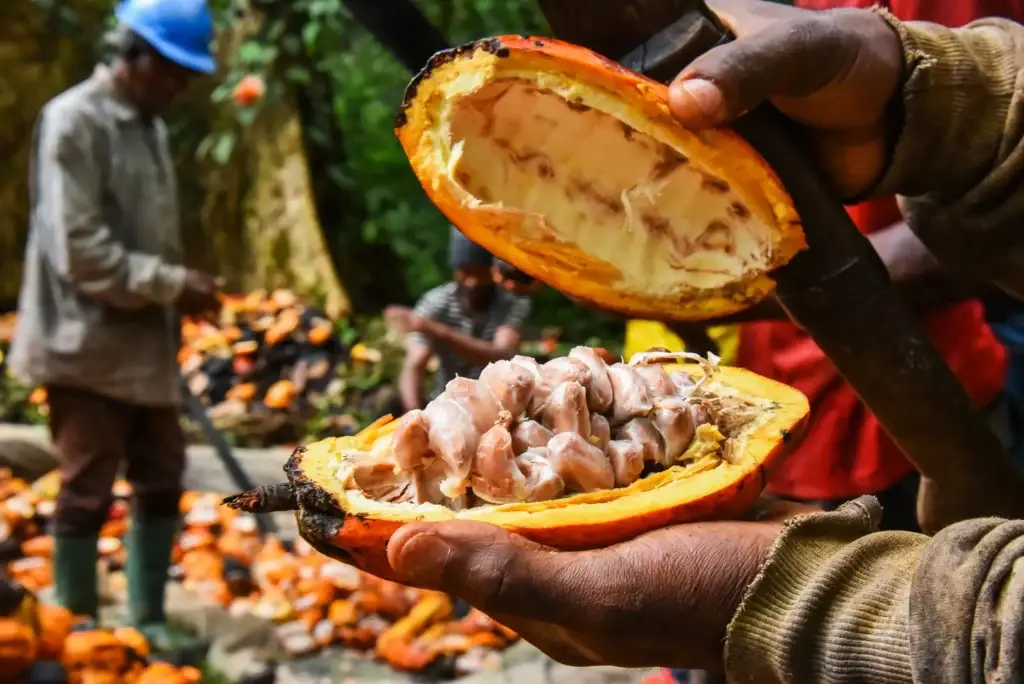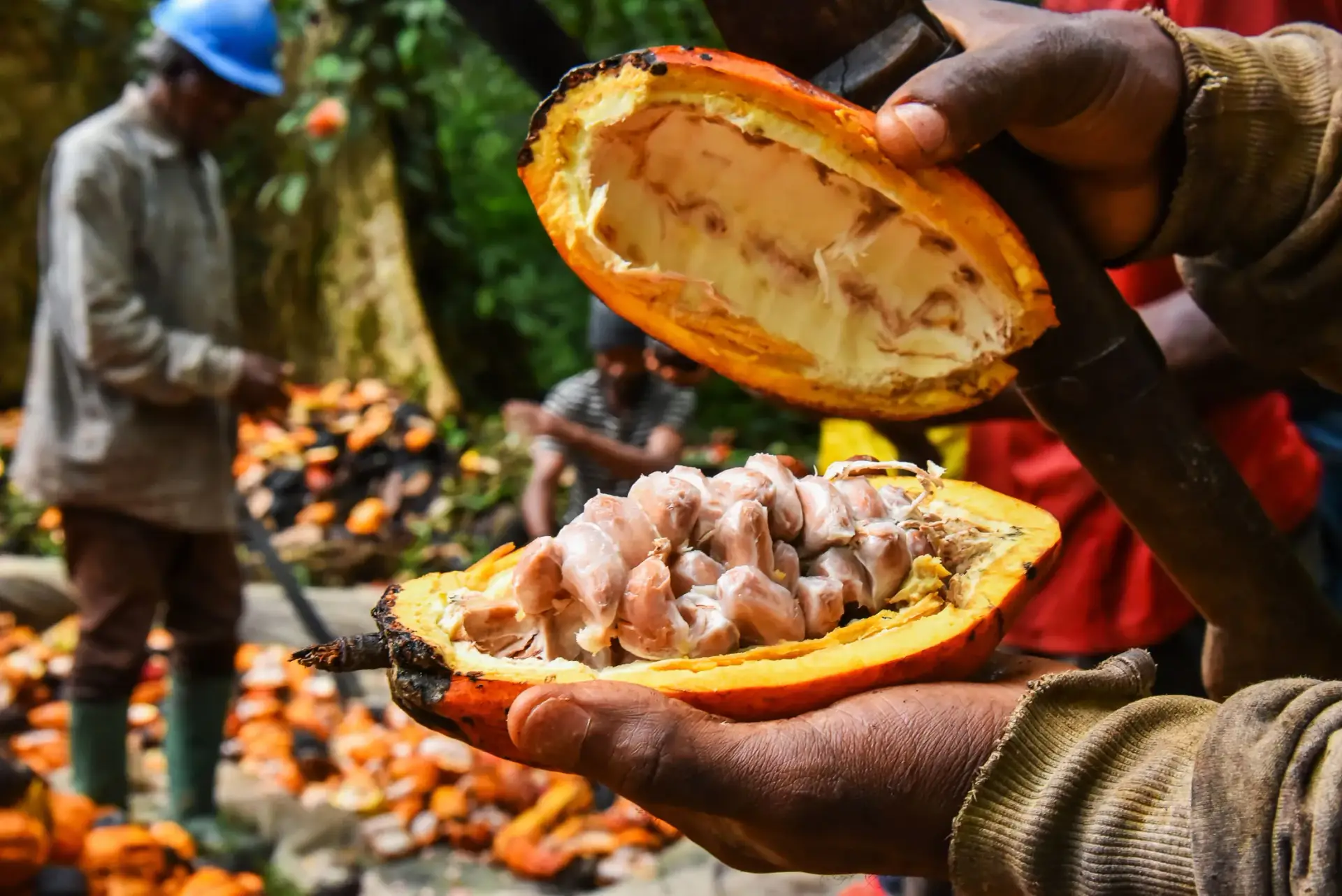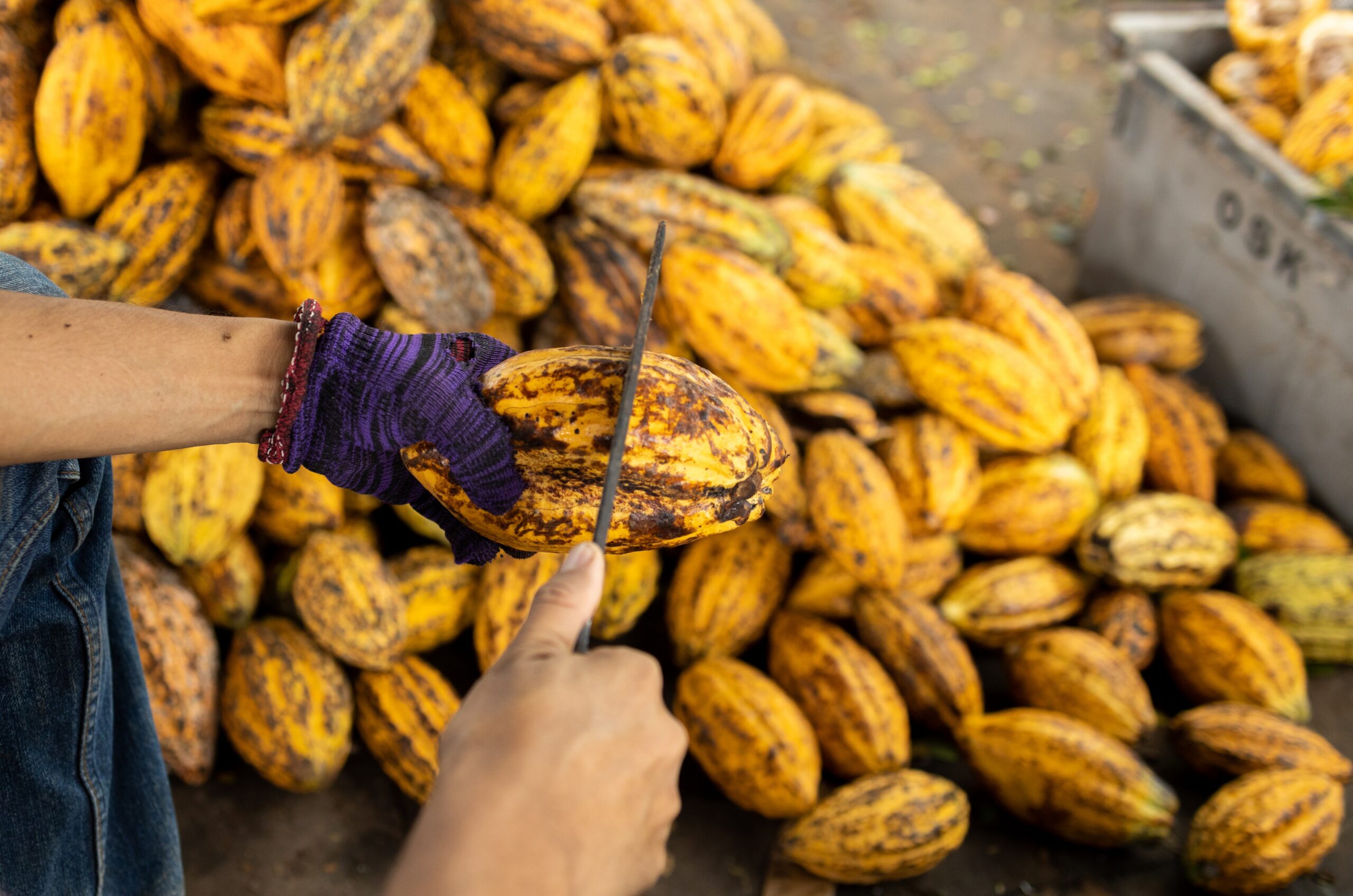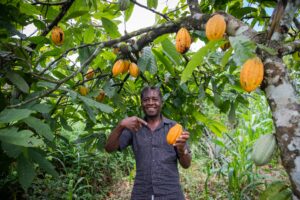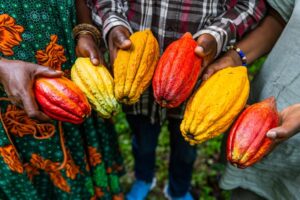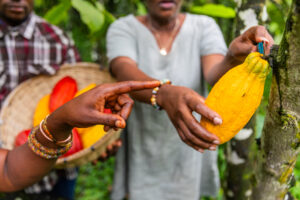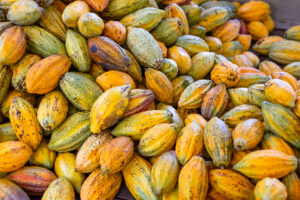Introduction
Chocolate is a global obsession, yet the journey from cocoa pod to chocolate bar remains a mystery to many. At the heart of every chocolate treat lies cocoa sourced from West Africa, where smallholder farmers cultivate beans that power the world’s chocolate industry. From the lush cocoa belts of Ivory Coast, Ghana, Nigeria, and Cameroon, to the mills and refineries of Europe and beyond, “cocoa from Nigeria” or “cocoa from Ghana” forms the backbone of chocolate production. This blog explores how West African cocoa underpins the global chocolate supply, examining the supply chain, quality assurance, sustainability efforts, and emerging trends that ensure the region’s continued leadership in
cocoa beans export.West Africa: Backbone of Global Cocoa Production
Historical Context
Cocoa arrived in West Africa in the late 19th century, with the Ivory Coast planting its first trees in the 1880s. Under colonial influence, Ghana (then the Gold Coast) rapidly expanded cocoa cultivation in the early 1900s, establishing itself as a leading exporter, according to
Statista. Today, millions of smallholder farms—most less than two hectares—sustain the African cocoa industry, providing livelihoods for nearly six million farming households across the region.
Production by Country
Ivory Coast: The world’s largest cocoa producer, responsible for over half of global cocoa output; in 2022/23 it contributed more than 50% of the world’s supply.
Ghana: Around 19% of global production comes from Ghana, renowned for high-quality, fine-flavor beans prized in premium chocolate.
Nigeria: Providing about 5% of global cocoa, Nigeria has seen export values reach approximately $670 million in 2023, shipping over 243,000 tonnes of raw beans (
World Integrated Trade Solution). Cameroon: Also contributing around 5%, Cameroon remains a key but smaller player in the region’s cocoa beans export market.
Together, these four countries supply roughly 70% of the world’s cocoa, anchoring the global chocolate supply chain.
From Farm to Factory: The Supply Chain
Cocoa Sourcing
Cocoa sourcing begins at local farms where growers harvest ripe pods, extract beans, and ferment them—typically for 5 to 8 days—to develop flavor precursors. After fermentation, beans are sun‑dried for about 6 days; both steps are crucial for achieving the desired cocoa quality and purity.
Export and Logistics
Once dried, beans are bagged and transported—often by truck—to export hubs. Abidjan’s port handles over 3 million tonnes of cocoa annually, while Tema in Ghana processes around 1 million tonnes. From there, beans are shipped worldwide: Europe imports roughly 60% of West Africa’s beans, North America about 15%, and Asia’s share is rapidly increasing as new chocolate markets emerge.
Chocolate Production Worldwide
West African cocoa underpins chocolate factories from Belgium’s artisanal chocolatiers to mass‑market producers like Hershey’s and Mars. Without reliable cocoa sourcing from Ivory Coast, Ghana, and Nigeria, global chocolate production would face severe shortages. In the 2023/24 season, the International Cocoa Organization reported a global deficit of 441,000 MT, the largest in over 60 years, underscoring how critical these beans are to meeting demand
(Nasdaq).Manufacturers typically blend beans from different origins to achieve consistent flavor profiles, a practice known as “bean sourcing.” This blending relies on predictable volumes of West African cocoa and highlights the need for robust supply chains (
sustainabilitybynumbers.com).During the process,
cocoa nibs are ground into cocoa liquor (cocoa mass), which can be pressed into cocoa butter and
cocoa powder. Manufacturers blend mass from different origins to ensure flavor consistency, relying heavily on West African cocoa’s predictable volumes and quality parameters.
Ensuring Cocoa Quality
Key Quality Factors
Quality hinges on bean variety, fermentation duration, drying conditions, and storage. Proper fermentation—around 7 to 8 days—yields beans with over 98% purity, optimal fat content, and desirable flavor compounds. Inadequate fermentation or drying can produce off‑flavors and reduce
cocoa butter yields, impacting chocolate production quality.
Certifications and Standards
To meet buyer expectations, many farmers pursue certifications:
Fairtrade & Rainforest Alliance: Emphasize social safeguards, environmental protection, and traceability.
ARS‑1000: An African‑driven standard for sustainable cocoa farming, covering traceability, good agricultural practices, and farmer welfare.
EU Sustainable Cocoa Initiative: Invests €25 million to enhance the economic, social, and environmental sustainability of West African cocoa supply chains.
These programs bolster cocoa quality, enable cocoa exporters in Africa to access premium markets, and build trust with global buyers.
Sustainable Cocoa Farming in West Africa
Challenges
Farmers grapple with aging trees—many over 40 years old—yielding as little as 300 kg/ha annually, far below potential 2,000 kg/ha yields. Climate change brings erratic rainfall, heatwaves, and disease pressures like black pod and vascular streak dieback, causing cocoa prices to surge by 136% between July 2022 and February 2024
Climate Central. Low incomes, limited credit, and poor infrastructure further hamper farm productivity.
Initiatives for Sustainability
EU Sustainable Cocoa Initiative: Partners with governments and industry to improve farmer training, yield forecasting, and deforestation monitoring.
ARS‑1000 Standard: Promotes continuous improvement in farming practices, ensuring traceable and ethically produced cocoa.
Digital Traceability: Ghana’s implementation of blockchain-based traceability enhances transparency and combats child labor, ensuring consumers know exactly where their cocoa originates.
Combined, these efforts aim to foster sustainable cocoa farming, balancing productivity with environmental stewardship and social welfare.
The Nigerian Edge: Emerging Cocoa Power
Export Growth and Opportunities
Nigeria’s
cocoa beans exports jumped by nearly 30% in the past two years, reaching export revenues of around $670 million in 2023. Government incentives and private investments have revitalized old farms and expanded processing capacities, positioning cocoa from Nigeria as an attractive alternative to more established origins.
Flavor and Quality
Nigerian beans are favored for their earthy, fruity notes and higher fat content, making them ideal for robust dark chocolates and specialty blends. Improved fermentation protocols—targeting 7 to 8 days—and better drying infrastructure have elevated cocoa quality, earning recognition in international buyer circles.
Market Diversification
While Europe remains a primary destination, Nigerian exporters are forging new routes into Asia and Latin America, leveraging trade agreements and competitive pricing to expand their global footprint.
Challenges and Innovations
Climate and Price Volatility
Climate extremes, including unprecedented heatwaves, have made West Africa’s cocoa belt ten times more prone to droughts, threatening future yields and driving price volatility (
The Guardian). Global market deficits—estimated at 478,000 tonnes for 2023/24—underscore the urgency of climate-resilient solutions.
Technological and Agronomic Innovations
Researchers are developing disease-resistant, high-yield cocoa varieties, aiming for sustainable output increases. Farmer training programs on integrated pest management, agroforestry, and soil health improve resilience. Digital tools—from mobile extension services to satellite monitoring—optimize resource use and traceability, strengthening the link between the cocoa farmer and the chocolate maker.
Future Outlook
Demand Trends
Global chocolate consumption is projected to grow by 2.5% annually over the next decade, with emerging markets in Asia and Latin America driving much of the increase. This surge will heighten pressure on West African cocoa supply, making sustainable farming and efficient supply chains more critical than ever.
Strategic Imperatives
Replanting and Rehabilitation: Upgrading old farms with high‑yield seedlings and shade management to boost productivity.
Climate Adaptation: Investing in irrigation, heat‑tolerant varieties, and soil moisture conservation techniques.
Value Addition: Expanding local processing to retain more value in-country, from
cocoa mass (cocoa liquor) production to finished chocolate goods.
By addressing these priorities, West Africa can maintain its leadership in cocoa sourcing, support farmer prosperity, and power the world’s chocolate industry for generations to come.
Conclusion
West African cocoa remains the essential ingredient in the global chocolate recipe, supporting an industry valued at over $130 billion annually. From the farms of Ivory Coast, Ghana, Nigeria, and Cameroon to the factories of Europe and beyond, this region’s cocoa shapes the chocolate we love. By upholding rigorous quality standards, championing sustainable cocoa farming initiatives, and embracing innovations in agriculture and traceability, West Africa is poised to meet the world’s sweet tooth sustainably and responsibly. In doing so, it ensures that every chocolate lover can continue to savor not just the taste, but the story behind their favorite treat—powered by West African cocoa.
For bulk cocoa beans, contact www.radadinternational.com
We supply
Cocoa Nibb
Cocoa butter
Cocoa Liquor / Cocoa Mass
Alkalized cocoa powder
Unscented cocoa butter
Natural cocoa beans
Natural cocoa butter
